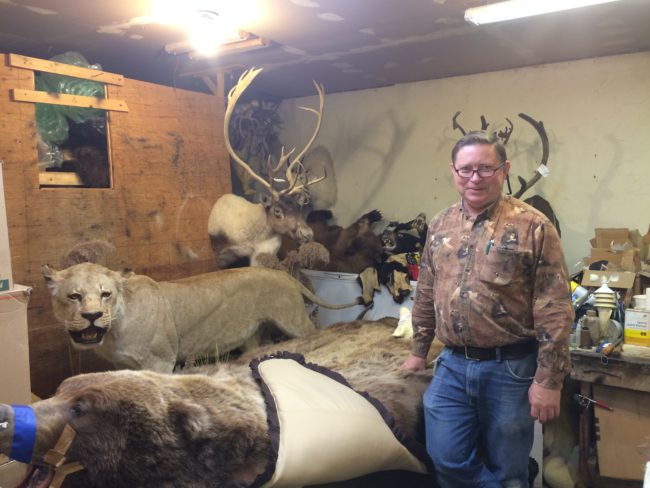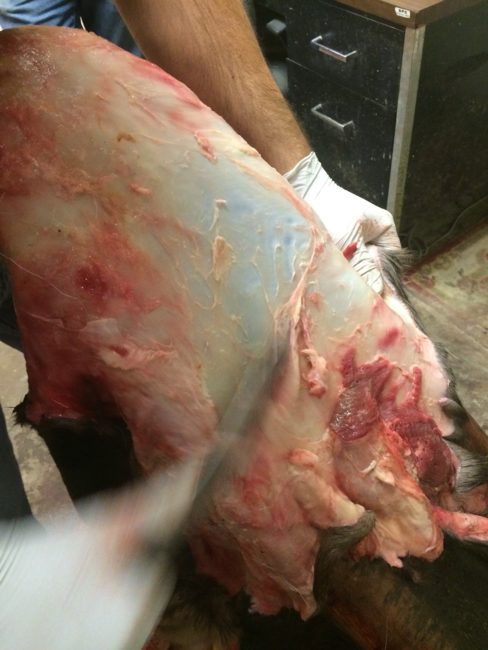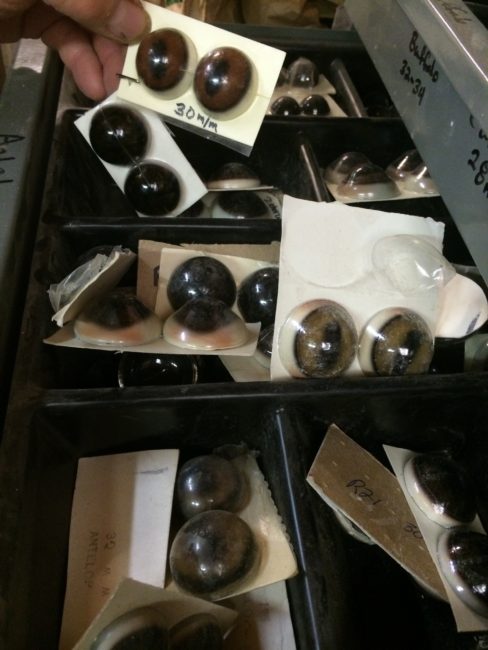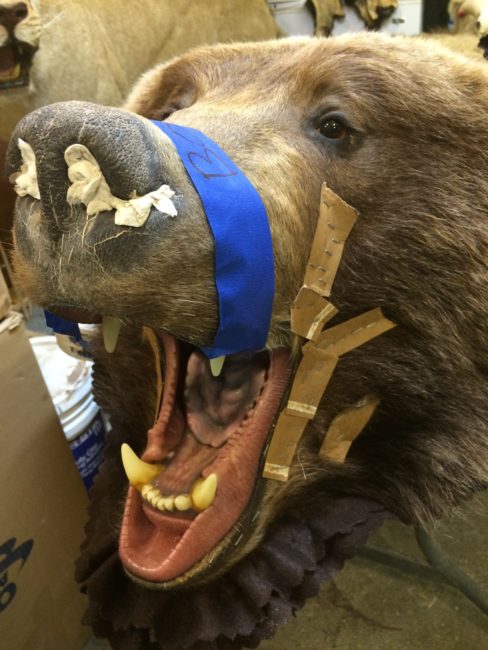
At its worst, a bad taxidermy job is gaudy and unsettling. At its finest, taxidermy turns animals into art, preserved for a lifetime or more. Where a specimen falls on that spectrum is up to the skill and ardor of the taxidermist.
When you step into Larry Golden’s workshop near Palmer, it’ll remind you of that scene in Ace Ventura where the pet detective gets home to his animal kingdom. But in Larry Golden’s animal kingdom, all the animals are dead. And that’s why Larry has a really difficult job — to make them look alive.

Fortunately, Larry is really good at his job. If you’ve been to a sporting goods store in southcentral Alaska, like Cabela’s or Sportsman’s Warehouse, odds are you’ve seen his work. He’s been at it a long time. And like a lot of taxidermists, Larry’s self-taught.
“It was $10, I think, to send off for these little booklets, this home course,” he remembers. “And so at about 10 years old I started playing around with frogs and birds and squirrels and what have you.”
Larry grew up in Missouri. By the time he was 16, he’d gotten his brother into taxidermy, too.
“So My dad said, ‘Well ya’ll seem like you’re doing pretty good. Why don’t you let me run you a little ad in the phone book?’ And so he did. And we happened to be the only taxidermists in the yellow pages and we were in business overnight,” he says. “I’ve been doing it ever since.”
For the Goldens, taxidermy is a family affair. If you think Larry started early, his son Micah started even earlier.
“He was actually playing around the shop when he was in diapers,” Larry says. “By the time he was about 6 years old he’d be skinning deer heads for me for the commercial customers.”

At 34, Micah is still the best flesher in the shop.
“He’s probably one of the fastest with a knife I’ve ever seen,” his dad says.
Micah unfolds a frozen caribou hide a hunter dropped off the night before.
“All this fat here has to come off. … All this meat,” he says.
If there are bits of fat and flesh left on the skin, it could cause the mount to rot down the road.
Micah slings the hide over a skinning post, sharpens his knife. Stroke by stroke, he deftly cuts off the fat until the hide looks translucent and almost white.
“Then we’ll put salt on that and hang it to dry. And then it’s ready to go to the tannery,” Micah says.
Micah can do a caribou hide in about 30-35 minutes. Having tried this myself on an elk hide — a mediocre job that took many hours — I can tell you that Micah’s pretty much the Usain Bolt of skinning.
So that’s step one. The skin.
We move on to another project Larry’s working on, a sheep. It’s a shoulder-mount, which is just an animal’s neck and head. Larry pulls out a mannequin, which is the taxidermist’s equivalent of a blank canvas. It’s got the general shape of a sheep, but it really doesn’t look sheep-like. Not yet.
“Before we glue the skin to it we have to rough this up,” he says. “And this is the technique we use. It’s a special little tool for scratching the slickness off of the foam. You rough it up so the glue will stick good. The hide dries to that. It’ll conform to all the contours of the mannequin.”
And after the skin’s securely on, “Screw the horns on here, put the eyeballs on here, the eyes are made of glass of course.”

And this brings us to one of the coolest parts of Larry’s shop. A tackle-box full of eyes.
“Yeah, a drawer full of eyes,” he laughs. There are all kinds of eyes in here. Bear eyes, deer eyes, cougar eyes, giraffe eyes, even crocodile eyes.
Eyes are everything. In the world of taxidermy, anyone can slap a hide on a mount and call a job done. But expression is the mark of a master taxidermist. Even though most taxidermists use eyes from the same supply stores, how they’re mounted makes all the difference.
“You can change the total expression on an animal with its eyes,” Larry says.
For our sheep, Larry says they’re going for a soft, but fully alert look.
“You don’t want that blank stare look, you know.”

Giving the sheep the right expression gives the mount authenticity. When you look at it, you should feel like you’re seeing this sheep in the Chugach, looking up from his grazing to scan the landscape for predators.
Larry’s gone to great lengths to make his work authentic. One time, for example, he was working on an African mount.
“In Africa a lot of the dirt is reddish-brown, and you don’t find too much reddish-brown dirt up here,” he explains.
He happened to be on vacation in Texas, saw the right shade of red.
“I stopped on the side of the road, I scooped me up a bunch, went to the post office and mailed it to myself!”
He used it on the mount’s base, along with some Texas stickler bushes, which look like the dry, thorny shrubbery you might find in a desert a continent away.
Authenticity is Larry’s Holy Grail. He’s been at it a lifetime, and he says he has no plans to quit.
“I tell people I’ll probably die at my workbench,” he jokes.
With hunting season underway and a freezer full of animals to mount, it better be long time before Larry goes the way of his subject matter.
